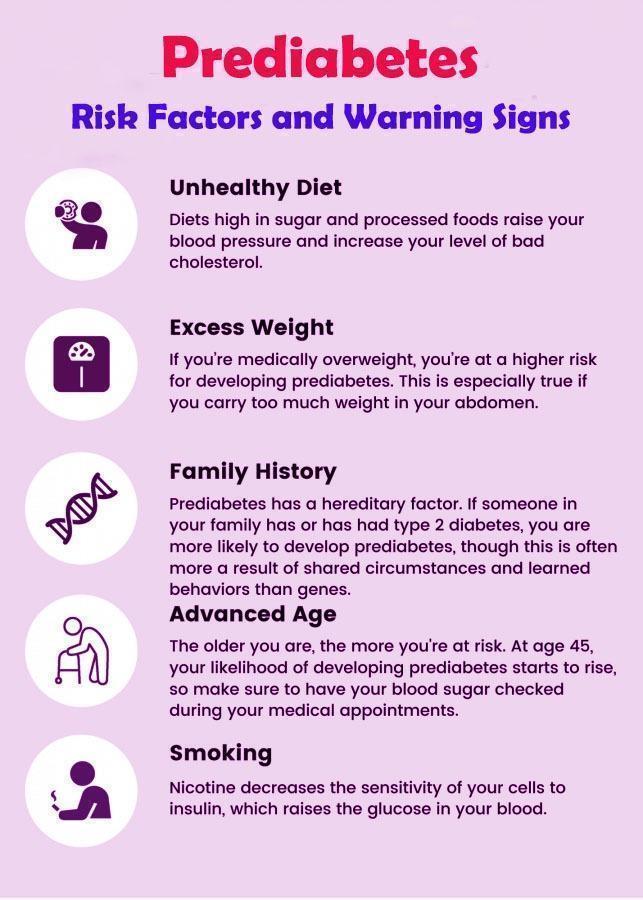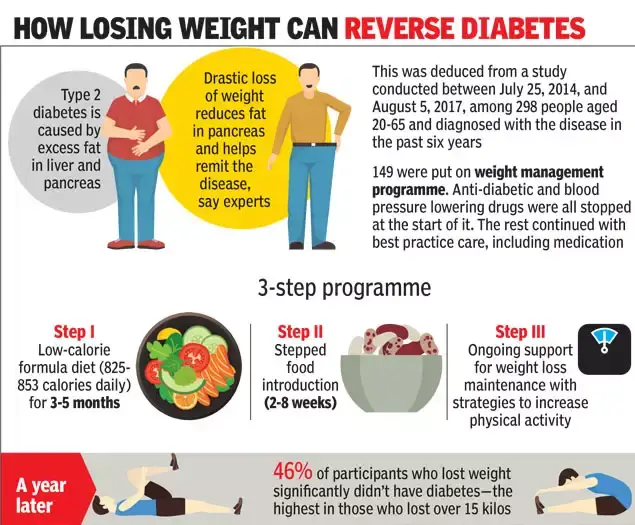Pre-Diabetes: What You Need to Know
Pre-diabetes is a condition that occurs when blood sugar levels are higher than normal but not high enough to be classified as type 2 diabetes.
It is estimated that 88 million adults in the United States have pre-diabetes, which is approximately 1 in 3 Americans. Pre-diabetes often goes undiagnosed, as there may be no noticeable symptoms. However, if left untreated, pre-diabetes can lead to the development of type 2 diabetes, which can increase the risk of serious health complications such as heart disease, stroke, kidney disease, and blindness. The good news is that pre-diabetes can often be prevented or delayed with lifestyle changes and medical intervention. In this post, we will explore the causes, symptoms, diagnosis, prevention, and management of pre-diabetes.
Risk
Factors
Age,
weight, family history, and lifestyle factors are all risk factors for
pre-diabetes. The risk of pre-diabetes increases with age, particularly after the
age of 45. Being overweight or obese, especially if the weight is concentrated
around the waist, can increase the risk of pre-diabetes. Having a family
history of type 2 diabetes can also increase the risk. Lifestyle factors such
as physical inactivity, a diet high in processed and sugary foods, and smoking
can also contribute to the development of pre-diabetes.
Symptoms
Many people
with pre-diabetes do not experience any symptoms, which is why screening is so
important. However, some people may experience symptoms such as increased
thirst, frequent urination, fatigue, and blurred vision. These symptoms are not
specific to pre-diabetes and can also be indicative of other health conditions,
so it is important to see a doctor for proper diagnosis.
Diagnosis
The three
main diagnostic tests for pre-diabetes are the fasting plasma glucose (FPG)
test, the oral glucose tolerance test (OGTT), and the A1C test. The FPG test
measures blood sugar levels after an overnight fast. The OGTT measures blood
sugar levels after drinking a sugary beverage. The A1C test measures average
blood sugar levels over the past two to three months. A diagnosis of
pre-diabetes is made when blood sugar levels are higher than normal but not
high enough to be classified as type 2 diabetes.
Pre-diabetes can often be prevented or delayed with lifestyle changes. Losing weight, eating a healthy diet that is low in processed and sugary foods, and increasing physical activity can all help to prevent or delay the progression to type 2 diabetes. Even modest weight loss (5-10% of body weight) and 150 minutes of moderate-intensity physical activity per week can significantly reduce the risk of developing type 2 diabetes.
Other healthy lifestyle habits include getting
enough sleep, reducing stress, and quitting smoking if applicable.
Diet
Diet plays
a crucial role in preventing and managing pre-diabetes. The American Diabetes
Association recommends a diet rich in whole grains, fruits, vegetables, lean
proteins, and healthy fats such as olive oil and nuts. Reducing intake of
sugary drinks, refined carbohydrates, and saturated and trans fats can also be
beneficial. A registered dietitian can help develop a personalized nutrition
plan.
There is
some research that suggests a possible link between poor oral hygiene and an
increased risk of pre-diabetes. One study published in the Journal of
Periodontology found that individuals with poor oral hygiene and gum disease
were more likely to have pre-diabetes or undiagnosed diabetes compared to those
with good oral hygiene.
Stress
Chronic
stress can lead to the release of stress hormones, such as cortisol, which can
increase blood sugar levels and contribute to insulin resistance. A study
published in the Journal of Clinical Endocrinology and Metabolism found that
individuals who reported high levels of chronic stress had a higher risk of
developing pre-diabetes compared to those with lower levels of stress.
Therefore,
managing stress through healthy lifestyle habits, such as exercise, meditation,
and social support, may help reduce the risk of pre-diabetes and its associated
complications. Additionally, seeking support from mental health professionals,
such as therapists or counselors, can also be helpful in managing chronic
stress.
Medication
In addition
to lifestyle changes, medications such as metformin may also be prescribed to
help manage pre-diabetes. Metformin works by reducing the amount of glucose
produced by the liver and increasing insulin sensitivity. Other medications,
such as thiazolidinediones and GLP-1 receptor agonists, may also be prescribed
in certain cases.
Conclusion
Pre-diabetes
is a serious condition that can increase the risk of type 2 diabetes, heart
disease, and stroke. However, with early detection and intervention,
pre-diabetes can often be prevented or delayed. Making lifestyle changes such
as maintaining a healthy weight, eating a balanced diet, and getting regular
physical activity can all help to prevent or manage pre-diabetes. If you are at
risk of pre-diabetes or are experiencing symptoms, be sure to see a healthcare
provider for proper diagnosis and treatment.








Comments
Post a Comment